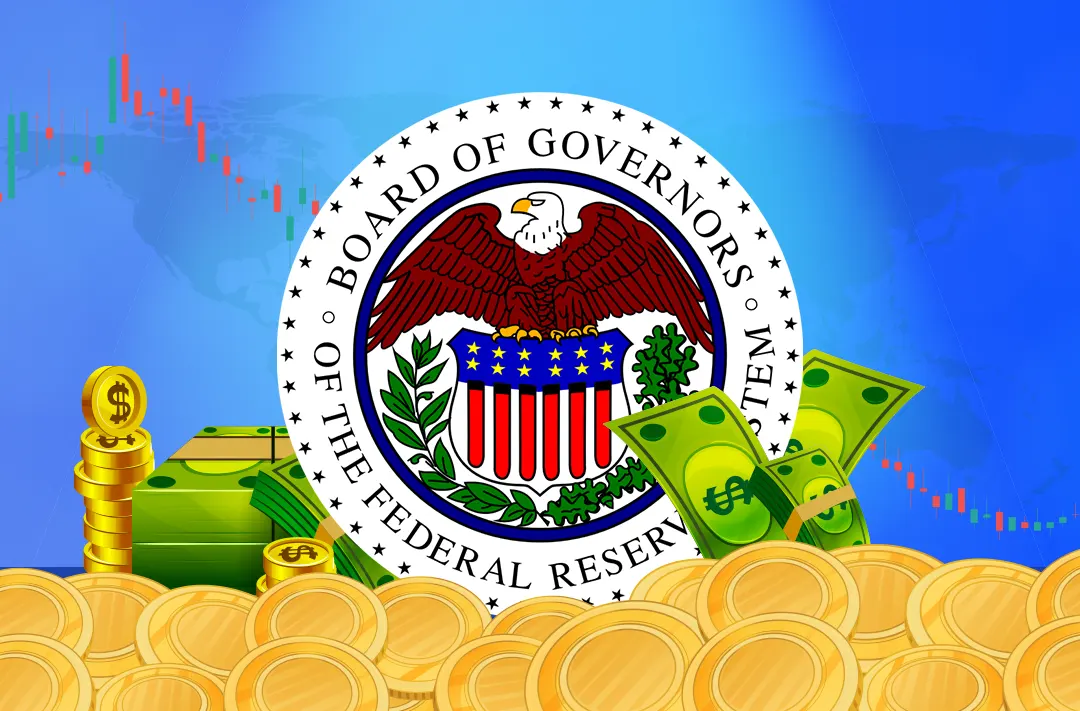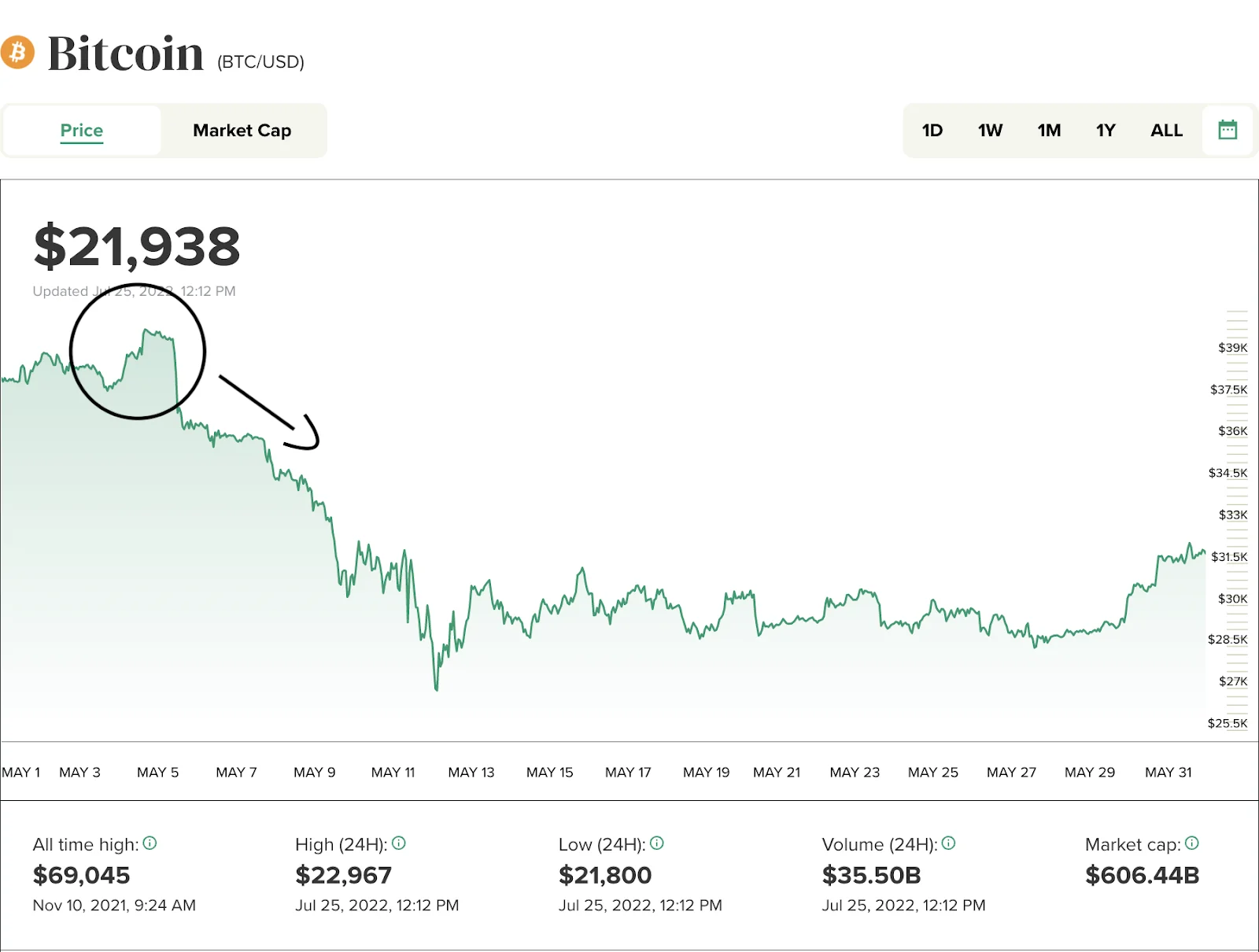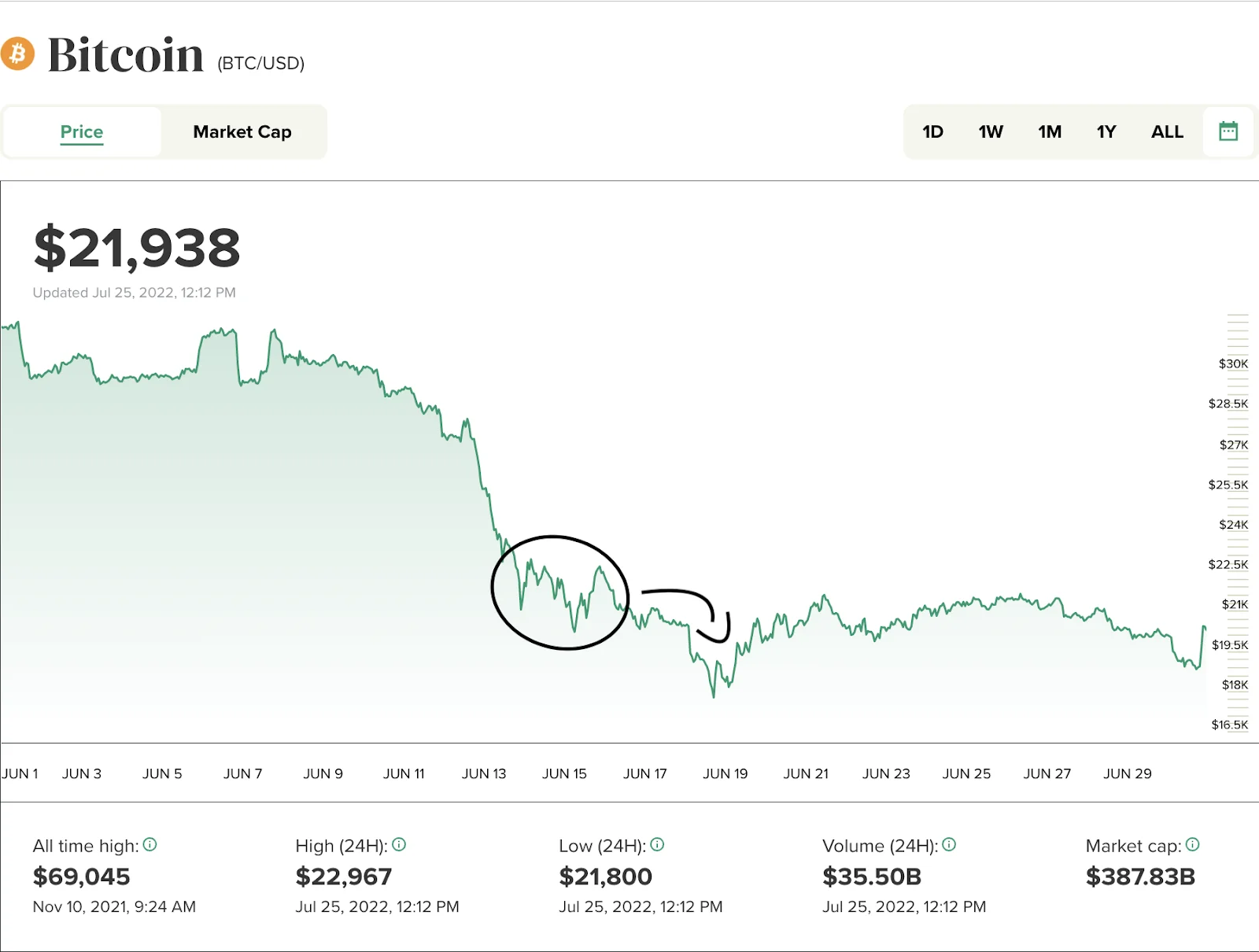No downturn. Why the cryptocurrency market grew after the Fed raised the rate
Experts told about market reaction to the Fed's decision and investment strategies

29.07.2022
1023
6 min
0
During a two-day meeting on July 26-27, the US Federal Reserve System (Fed) raised the interest rate on federal funds by 75 basis points, now its range is 2,25-2,5% per year. All members of the committee voted in favor of the decision, adding that “a further increase in the target range would be appropriate.”
The interest rate increase has been discussed for a long time, and analysts' predictions coincided with reality. Sam Bankman-Fried, head of the cryptocurrency exchange FTX, said that the future well-being of his business depends entirely on the Fed's decisions. In his view, raising interest rates to combat high inflation has led to a reassessment of risk expectations in the market.
Why the rate was raised
The federal funds rate is the interest rate at which federal banks lend to each other for short terms. It is set by the Federal Open Market Committee (FOMC) eight times a year. The federal funds rate is the main tool of US monetary policy, and any change in it directly influences other lending rates and stock markets. Since the crypto sector directly correlates with traditional finance, this situation will affect it as well.
The Fed's focus is on weakening production numbers and increased spending in the US economy. Despite the recorded increase in jobs, the unemployment rate remains at a high level. The Fed said in a press release that “Inflation remains high because of supply-and-demand imbalances caused by the pandemic, higher food and energy prices and broader price pressures.”
The rate increase by 75 basis points at once says about the remaining high inflation risks, the founder of the TerraCrypto project Nikita Vassev believes. Consequently, investors would prefer to move some capital to risk-free assets, such as treasury securities or bonds, whose yields should at least partially cover losses from inflation. This, in turn, means that high-risk assets, such as stocks and cryptocurrencies, should decline in price, Vassev explained.
US markets have already reacted to the Fed's decision. As of July 29, since the rate hike, the S&P 500 Index has increased by 3,05% and the Nasdaq by 21,1%.
The impact on the crypto market
Although the crypto market has made great progress in recent years, rate hikes usually have a negative impact on the rate of digital assets, explains Gleb Jout, head of CIS cryptocurrency exchange Bitget. However, it is not the determining factor.
During previous Fed interest rate changes, bitcoin moved in the opposite direction. As a rule, a rate hike led to a decrease in the capitalization of the entire crypto market and a decline in the rates of major digital currencies.

Bitcoin briefly declined during the week after the Fed raised interest rates by 0,25% on March 13 for the first time since 2018.

After the Fed meeting on May 3 and 4, during which the rate was reduced by 1%, the BTC rate went up from $37 000 to $39 000, but since May 6 it went down.

Bitcoin fell from $22 000 to $17 000 after a two-day Fed meeting on July 14 and 15 that decided to raise rates by 1,75%
This time there was no downturn, but just the opposite — the price of digital assets continued to grow. Vassev singles out two factors that contributed to market strengthening in the current situation. First, a 75-point rate hike coincided with market expectations, so the market was ready for such a shake-up. Second, US Fed Chairman Jerome Powell said the pace of rate hikes may be slowing down. “This already shows that we should not expect such an increase at the next meeting of the committee, and hence capital may start to return to risky assets by then,” the expert explained.
In his view, in the next two months, before the new Fed meeting, the crypto market could attract a large share of funds at the expense of investors who want to compensate for losses from inflation.
According to Jout, there is a close correlation between macroeconomic factors and the behavior of the crypto market. The expert noted that when the S&P 500 index is falling, bitcoin is also showing drawdowns. “At the moment, we see a fairly mirror effect of the macroeconomy,” the expert added.
During this period, market participants want to find a way to preserve the value of rapidly depreciating capital with the help of cryptocurrencies, and primarily at the expense of bitcoin, said co-founder of ENCRY Foundation Roman Nekrasov. As a consequence, the rate of the first cryptocurrency reached the $24 000 mark. However, according to Nekrasov, this spike may be temporary. The negative scenario allows for the possibility that in August the market will again “fall into the power of bears” and bitcoin will drop to $20 000.
What should investors do?
Regarding short-term investments, Nekrasov explained that at the moment the market is too volatile to make any predictions or recommendations. Vassev believes that a short-term strategy in today's situation should include the maximum possible diversification, as the market is extremely unstable and can reverse at any time. “The investment portfolio should include precious metals, treasury securities and cryptocurrencies, in particular bitcoin and Ethereum,” the expert explained.
Speaking specifically about the digital asset market, the Biget CEO recommends opting for strong and sustainable crypto projects with a real demand, user base and community.
According to the co-founder of ENCRY Foundation, in this period it is worth thinking about buying bitcoin for a long-term period of several years. He believes that within 12 to 18 months after bitcoin's halving in 2024, “a new round of a powerful bull cycle is expected that has the potential to take the first cryptocurrency above $100 000.”
Halving is bitcoin’s code embedded cut in half of the reward to miners for a mined block on the blockchain. Initially, miners received 50 BTC, this was reduced to 25 coins on November 28, 2012, to 12,5 coins on July 9, 2016, and to 6,25 coins on May 11, 2020. The next reward reduction to 3,125 BTC is expected in 2024 on block number 840 000.
Useful material?
Articles
How the largest cryptocurrency exchange’s initiatives help it maintain its leadership
Nov 19, 2022
Articles
What fan coins are needed for and what events contribute to their growth
Nov 16, 2022
Articles
Why Binance set the trend to publish transparent data on available funds
Nov 14, 2022
Articles
The journalists got acquainted with the documents revealing the details of the financial condition of the exchange
Nov 13, 2022
Articles
Desperate traders with stuck assets resort to semi-legal schemes to save deposits
Nov 11, 2022
Articles
Experts predict when to expect new peaks of the crypto market by analyzing its previous cycles
Nov 10, 2022









 Telegram
Telegram  Twitter
Twitter